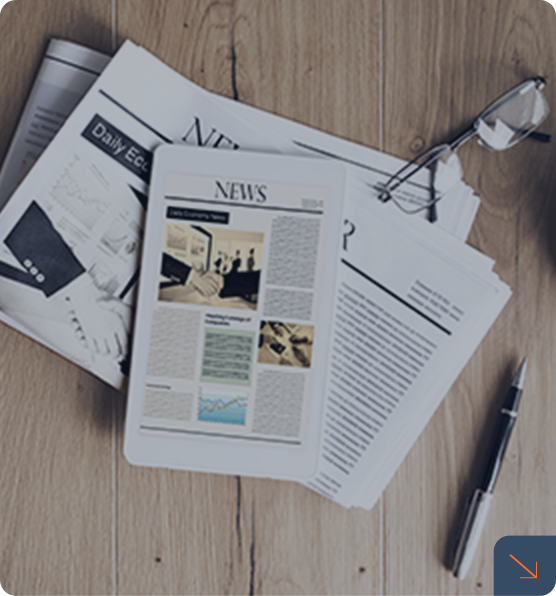The IP Strategy behind Pop Mart’s Overnight Popularity
Dr Tingting Fan
16 April 2025
To answer the question of the coolest thing at the moment: it is not the luxury brand Chanel or Taylor Swift on a world tour; it is a plush toy named Labubu, featuring pointy ears, devilish large eyes, and a row of nine fangs. This strange-looking creature has become such an overnight sensation worldwide that even K-pop girl group Blackpink idols Lisa, Jennie, and Rosé have become its loyal fans. From Hong Kong to Bangkok and from Jakarta to Paris, young people are lining up outside Pop Mart retail shops to get their hands on the plush toy.
Hong Kong’s home-grown father of Labubu
Labubu was created by Kasing Lung, a Hong Kong-born artist raised in the Netherlands. Drawing inspiration from Nordic folklore, he designed “The Monsters” series in 2015, introducing the universally popular Labubu, the tribe leader Zimomo, and Skull Tycoco.
In 2019, Lung entered into an exclusive agreement with Pop Mart, a Chinese pop culture and entertainment company, to establish The Monsters as a proprietary intellectual property (IP). Apart from launching different thematic series, the company also produces a wide variety of merchandise, ranging from blind boxes (contents inside remain a mystery until opened) and plush toys to refrigerator magnets and earphone cases.
In 2024, Labubu, a character from The Monsters series, made its unexpected appearance on the Instagram of Blackpink’s Lisa, a Thai national. The character soon caught the fancy of a Thai princess and even became Thailand’s official tourism ambassador. Thanks to Pop Mart’s network of over 500 stores in more than 30 countries and its successful sales strategy, Labubu now enjoys a devoted fan base across the world.
The discerning IP “talent scout”
Pop Mart, the company behind the must-have Labubu, is no newcomer to the scene. It was founded in 2010 by Wang Ning. He was inspired by Hong Kong’s LOG-ON and Japan’s Loft to position Pop Mart as a mecca for trendy collectible shopping, offering all sorts of whimsical cultural and creative toys. Although the company experienced instant success with consumers, new e-merchants flooding the market with similar on-trend goods have intensified price competition and eroded profit margins. Hence Pop Mart was gradually losing its competitive edge.
Fortunately, in late 2015, Pop Mart discovered Sonny Angel, a Japanese toy brand that sold like hot cakes across Asia. Featuring “Mini Figure” sold in blind boxes, the series may not fetch high unit prices but the constant launch of new series, coupled with hidden editions and limited editions, offered vast variety and turned them into hard-to-get collectibles. As a result, there has been no shortage of demand from fans.
Given the business opportunities afforded by the Sonny Angel brand, Pop Mart decided to explore the possibility of developing its own trendy toy IP. From Molly created by Hong Kong designer Kenny Wong, Satyr Rory by Korean designer Seulgie Lee, to Hirono and Snowy by Beijing artist Lang, Pop Mart has not only been discovering and signing trendy toy designers from around the world like a “talent scout”, but has also built up its own design team to launch such IP products as Crybaby, Minico, and Zsiga.
Putting customers first with a vertically-integrated business model
Similar to the many contracted artists of a record company, not every IP can become a hit. Pop Mart’s business process is unique in that from IP incubation and design to supply chain production, marketing, and sales, every aspect of the process testifies to the company’s keen insight into consumer demand.
Pop Mart’s targeted consumer group consists of young people aged between 18 and 29, 75% of whom are women with considerable spending power. Besides being trend-conscious and appearance-minded, these women are avid social media users who readily invest in quality-of-life improvements they can afford. To understand the preferences of these hip youngsters, Pop Mart has established close ties with consumers through its flagship stores on Tianmao and JD.com, live broadcasts on TikTok, as well as its own official app. Since 2019, Pop Mart has collaborated with Tencent Smart Retail to conduct in-depth analyses of consumers’ preferences and purchase behaviour, keeping a pulse on market trends. Consumer experience acts as an instant feedback loop, informing the company’s IP design and sales strategy.
The moment an artist is signed, Pop Mart will go about optimizing the IP image based on the IP’s style and audience, along with market feedback. Take Labubu’s blind box introduced in 2018 for example. Across all three generations of products launched so far, not only has the skin colour of the toys gradually become fairer, but the chestnut hair has also turned creamy white, achieving a softer colour tone and a warmer image. All these changes are intended to cater to consumer preferences.
Essential insights for sustaining popularity
Pop Mart’s priority on consumer experience is also demonstrated through seamless coordination between offline and online sales. Its offline brand stores focus not merely on sales but also on “planting grass”, i.e. showcasing the best images of all IPs to spark consumer interest, with the ultimate aim of growing a wider fan base. After logging onto the company’s app, consumers will receive personalized recommendations for new products as well as promotional information and activities, effectively turning curious onlookers into paying customers.
After app users make the first purchase, Pop Mart will further strengthen their purchase stickiness. On the one hand, it keeps churning out new images and products. For instance, an average of 5.8 blind boxes were launched each month in 2020, stimulating users’ desire to collect them. On the other hand, through integrated online and offline operations, it provides members with social interaction and innovative engagement initiatives (e.g. Mystery Bag and Adventure). To compensate for the limited number of physical retail stores, Pop Mart also incorporates a blind box mini-programme into its app, simulating blind box lucky draw experience in the stores. This initiative quickly attracts a large number of users by offering engaging consumer interactions, such as box selection and box shaking. In 2022, sales generated via this channel reached RMB950 million, accounting for almost half of the total online sales.
Can the smash hit Labubu also boost the popularity of other IP products? Can Pop Mart’s explosive growth be sustainable? The answers to these questions do not simply exist in the success of a few celebrity influencers driving live-stream sales, nor do they solely depend on the workings of scarcity marketing. The crux actually lies in sustained insights into the business or even the ability to lead the trendy young generation. Alex Zhou, Chief Consumer Officer of Pop Mart, hit the nail on the head when he said, “Pop Mart is a very typical crowd brand.” In his view, enterprises cater to distinct consumer groups sharing the same interests and passions. The key to sustainable growth hinges on how best to reach them effectively and repeatedly (see Note).
Note: https://finance.sina.com.cn/enterprise/2024-09-05/doc-incnrssq1236202.shtml#:~:text=”泡泡瑪特是,更好的人群運營%E3%80%82″





